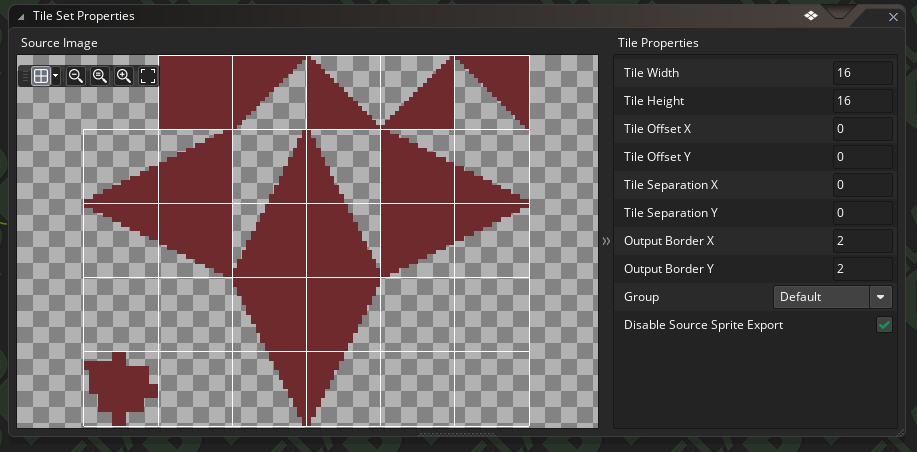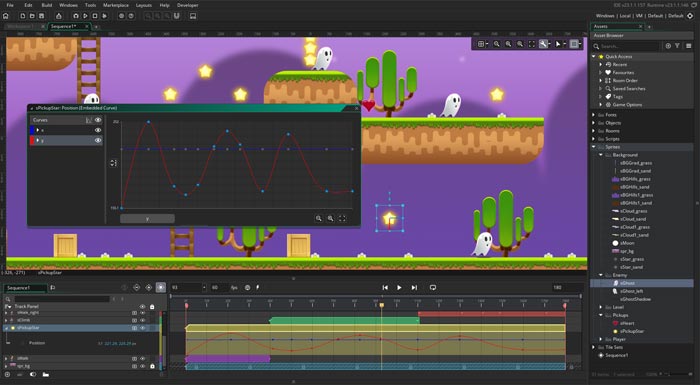

These are functions you use to create something (surface, buffer, data structure, etc.) and store the result in a variable. I am talking about the _create functions. In this tip, I will address something that creates confusion for beginner developers. It’s like having another layer over your base game. So anything you draw there, stays there: its position is not affected by the camera in-game. So if you draw something at (0, 0), it will draw at the top left corner of the game window, not inside the room. The event uses the game window coordinates instead of the room coordinates. Inside the Draw GUI event, you do not have to add the camera positions to make the HUD follow the camera. But there is a simpler way of drawing HUD on the screen: the Draw GUI event. var vsp = keyboard_check(vk_down) - keyboard_check(vk_up) įor drawing the HUD in their games, some people either use objects, or draw it through the Draw event – adding their relative positions to the camera/view coordinates, so that the HUD follows the camera/view. The same can be applied to the vertical position as well.

If the left key is pressed, hsp becomes -1: var hsp = 0 - 1 Īnd if nothing is pressed, it becomes 0: var hsp = 0 - 0 So if the right key is pressed, hsp becomes 1: var hsp = 1 - 0 But in GameMaker, true stands for 1 and false stands for 0 – they’re numbers, basically – so they can be used in an equation like this. You know that keyboard_check() returns true if the key specified is being pressed, and false if it is not. See: var hsp = keyboard_check(vk_right) - keyboard_check(vk_left) For example: var hsp Įlse if (keyboard_check(vk_left)) hsp = -1 Most beginners use conditions to set input variables. This is useful because you can check if the player is GOING to collide with an object by checking it with arguments like: //check if the player is 5 pixels away from a solid wall on its right side This is where to imagine your player is stationed in the room when the collision check is made.

The first and second arguments to the function are usually set to x and y respectively. The first and second arguments are the x and y coordinates where the collision will be checked, and the third argument is the object with which we’re checking a collision. It is better to use this function in a condition than using a collision event, since this way you have more control over how your collisions work. The function place_meeting() can be used for checking a collision with another object. Suggested by Karolis Poviliūnas and John Benson Through the same menu, you can also change the scaling and rotation of the instance, and set a unique ID so that you can access that particular instance through code. This way, you can assign different HPs to different instances, inside their creation code.
Gamemaker studio 2 layers code#
When you place instances inside a room using the Room Editor, you can right click on them and open the “Creation Code” window (or in GMS2, double-click) and type code in it. As a beginner, your first instinct might be to create another object and change the HP inside it. Say you want to have two enemies, one with 4 HP and the other with 10. #3: Different values for different instances So before copying code over to your project, make sure you at least try to understand how it works. Even if you do use code from a tutorial, do not attempt to modify it or expand upon it unless you understand how it works. If you’re serious about something, code it yourself. Tutorials exist as a guide so that you can understand how things work. You might think that it’d be a good idea to use a tutorial to build a game/system, but it’s not. In a project, you can’t have complete control over your workings if you don’t understand how any part of your code works. While that appears to be fine, it’s only going to increase the trouble.

Sometimes you just want to make something work, so you copy over some code from a tutorial, even if you don’t understand how it works. #2: Don’t copy-paste code without understanding Here are some tips which should help beginners do some things right and know what they might be doing wrong.īefore Googling something or asking someone about an issue, make sure to check the relevant entry in the documentation – it may contain information that might help you solve your problem.


 0 kommentar(er)
0 kommentar(er)
